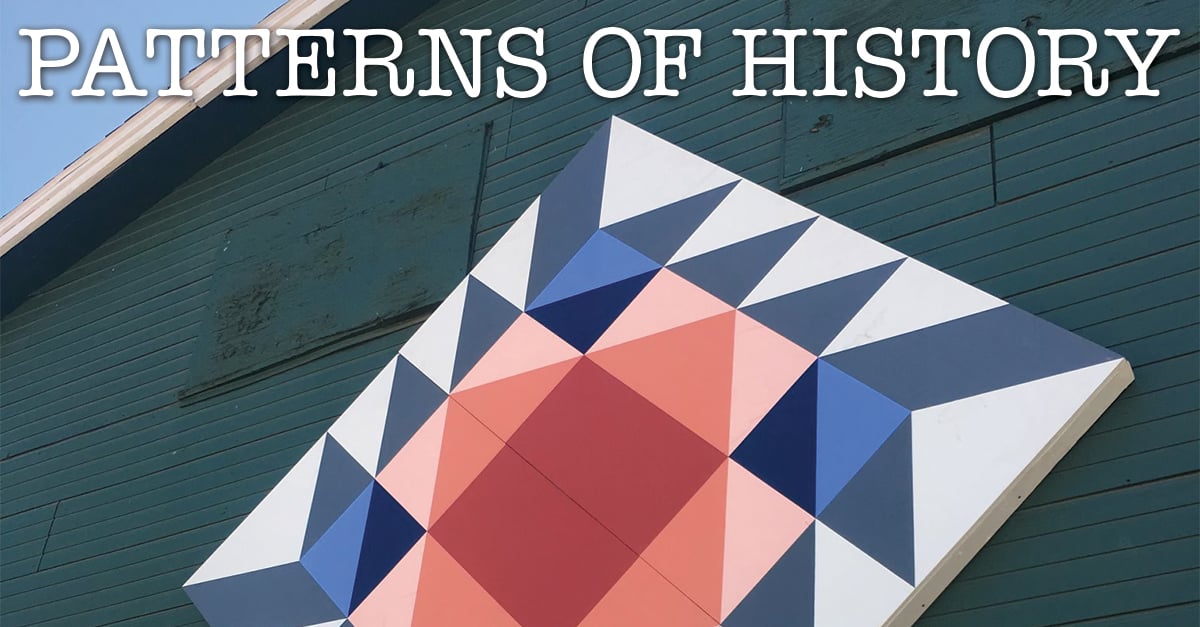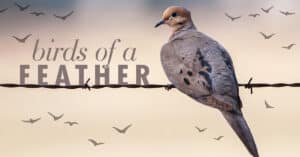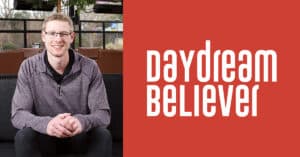Patterns of History
Connecting Communities with Barn Quilts…
Barn quilts have told stories about rural America for hundreds of years. A type of folk art, farmers once painted these large, quilt-like blocks on their barns, as both decoration and to express something meaningful about their farm or family. In fact, there is speculation that quilt patterns were even used as a kind of “quilt code” prior to the Civil War, communicating information along the Underground Railroad. Motifs sewn into a quilt hanging from a window or clothesline might indicate a safe house or warn of an area’s dangers, supposedly giving rise to famous quilting patterns like “Log Cabin” and “Shoofly.” Christine Baldwin, a resident and representative of the community of Dorris, explains, “All quilt blocks tell a story and there are thousands of patterns throughout the quilting world. That means you can select the meaning that goes with the building. For instance, the one that we put on the mill is called Saw Blade.”
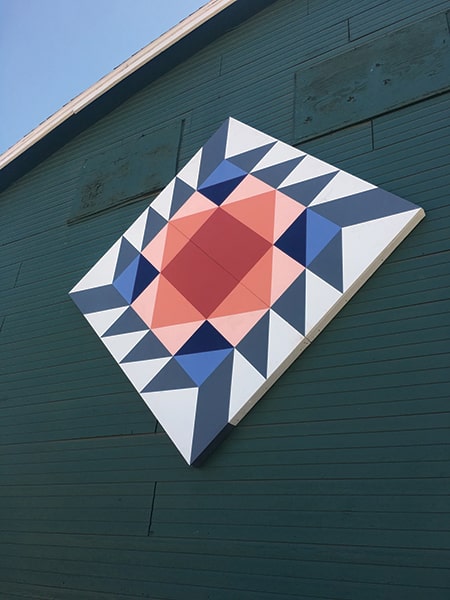
The “mill” to which Baldwin is referring is the mill in Dorris, one of the first historic buildings adorned with a barn quilt that’s part of a new trail linking five small communities between Dorris (just south of the Oregon border) and Bonanza, Ore. Baldwin is the secretary for Rural Klamath Connects, the local nonprofit formed to promote tourism in the area and the group behind the new trail. Some of the other motifs selected so far on the California side include the “Sawtooth Star” on the Tulelake Cold Storage and the “Road to California” pattern on the old Box Factory in Dorris. All of them have been hand-picked to portray the culture, history and landscape of the area.
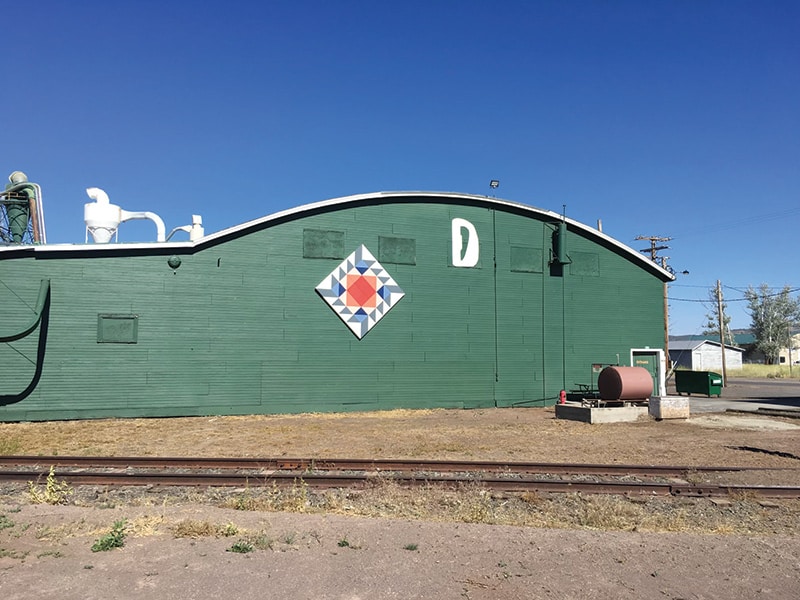
“The name of the project is ‘Connecting Borders,’” Baldwin says. “Like a quilt sewn edge to edge, our whole mission has been to connect our communities on both sides of the border.” Linda Woodley, the coordinator for Rural Klamath Connect, agrees. “I think what’s exciting is that we all get to share resources. Our five communities are all rural: Dorris, Tulelake, Malin, Merrill and Bonanza. None of us has everything alone, but together we have the resources to survive. We have such great history here in the area and agriculture in all of the towns, and it’s going to be cool to see these barn quilts bringing attention to many of the century farms and historical buildings in our area.” The organization already has a successful track record, having developed a local VoiceMap audio tour on the Modoc War as well as the Art of Survival Century Bike Ride and Gravel Grinder for the region. The stunning series of barn quilts will be the newest addition for visitors to explore.
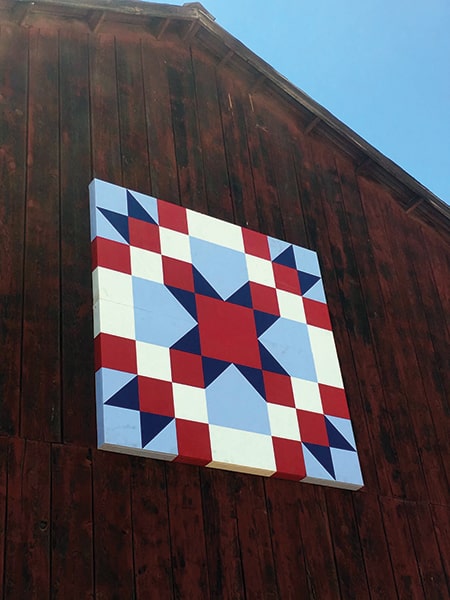
Making the barn quilts is no easy feat. It starts by placing two panels of medium-density overlay (MDO) plywood together to form an 8-by-8- foot panel. MDO is a specialty plywood used for a variety of projects, but it’s especially suited for exterior use because it’s waterproof, smooth and durable. MDO also takes paint exceptionally well. Baldwin describes,“Theymakeabigframewithtwo-by-foursfortheMDO,and they’re quite heavy. We have to install them with a lift. But before that, you must do all the measurements and mark or scribe the panels with the pattern. Then you tape off all your lines so you can paint.” Woodley adds, “Then it takes about 30 or 35 hours per block to paint it because you can only do so much at a time, and it has to be primed followed by four coats of specialty paint. It is very labor intensive.”
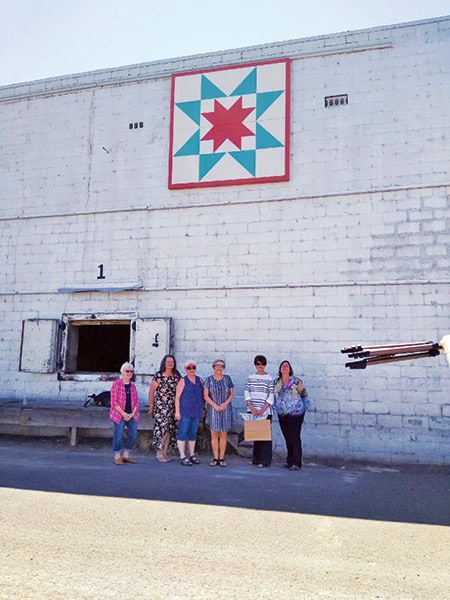
Despite some setbacks with COVID-19, the group has finished at least two barn quilts per community on the California side, including Dorris and Tulelake, with more to come. “This is phase one, where we proposed making two in each of the five communities. We’re looking forward finishing that by June 1. The second phase will be to have five in each community, with a website and brochure showing what the quilt blocks identify and why the owner selected it,” explains Woodley.

Historically, a quilt is often the work of many hands, and the same is true of the Barn Quilt Trail project. “Everyone has been so amazing to work through everything we’ve faced to get to this point, and are still dedicating their time and energy to do something so special. It will benefit everyone.” And, based on patterns of history, it will also give the region the chance to shape its narrative through craft – the ultimate form of storytelling. •
Barn Quilt Trail • www.ruralklamathconnects.com

